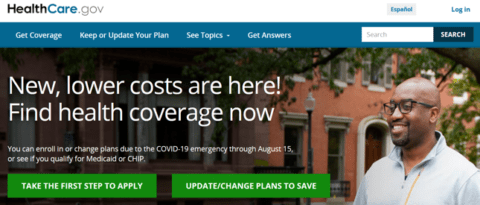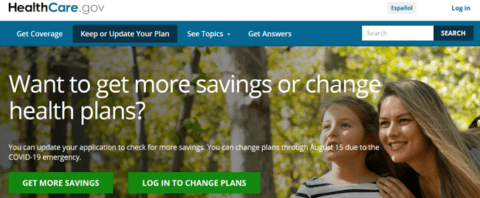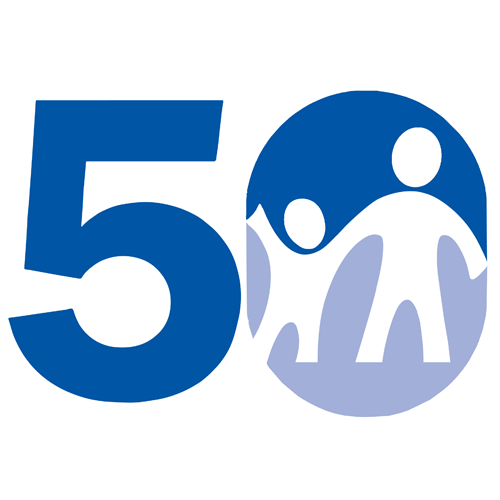Under the American Rescue Plan passed by Congress and enacted into law on March 11,[1] a number of important changes were made to help make health insurance more affordable for individuals and families purchasing health care coverage through the federal marketplace, HealthCare.Gov. These changes went into effect on April 1, 2021, which means anyone signing up for a health plan through HealthCare.Gov can begin receiving health care coverage as soon as May 1.

The U.S. Department of Health and Human Services (HHS) estimates that 116,500 individuals in North Carolina are currently uninsured.[2] According to the 2019 North Carolina Early Care and Workforce Study,
- 52% of the child care workforce employed in child care centers have no health care coverage through their job (not full or even partial coverage),[3] and
- 16% of family child care providers do not have health care coverage.[4]
American Rescue Plan Health Care Affordability Changes
The U.S. Department of Health and Human Services (HHS) has estimated that three out of four uninsured Americans can access $0 cost health coverage and about four out of five current HealthCare.Gov consumers will be able to find a health plan for $10 per month.[5] Many people choosing health plans through HealthCare.Gov will see their monthly premiums decline by $50 per person per month and $85 per policy per month.[6] How is this possible? In short, Congress made healthcare more affordable for individuals and families who do not have employer-sponsored health coverage by increasing the amount of monthly premiums paid by the federal government. When the federal government pays more, individual or family payments for monthly coverage are reduced (or in some cases eliminated).
The HealthCare.Gov Marketplace
The HealthCare.Gov marketplace tiers healthcare plans by levels: Bronze, Silver, Gold and Platinum.[7] In general, the bronze plan has the lowest monthly premiums. However, out of pocket costs (such as expenses related to health plan “deductibles,” which require people to pay out-of-pocket before coverage applies) may be high. Silver plans may have a slightly higher monthly premium, but require lower out-of-pocket costs. Gold plans generally have a high monthly premium, but very low out-of-pocket costs. Platinum plans have the highest monthly premiums and lowest out-of-pocket costs. When choosing a health plan, it’s important to understand: monthly premiums, deductibles (expenses before insurance coverage applies to you) and any co-pays for medical care (e.g., doctor visits, hospital visits or stays, etc.).
Greater Subsidies for Health Coverage to Make Health Plans More Affordable (or Free)

Within the HealthCare.Gov marketplace, the cost of health insurance varies by the type of plan (Bronze, Silver, Gold and Platinum) as well as the age of the person(s) seeking coverage, number and age of individuals in the household (if you want a family plan) and geographic area. The way the federal government makes healthcare coverage more affordable is through the use of premium tax credits. The amount of the tax credit varies by income and the cost of health plans in your area. For example, the lower your income, the greater your premium tax credit. Individuals can estimate their expected income for the year and choose to apply the tax credit on a monthly basis, which makes the monthly cost of premiums much lower for people. For individuals who choose to apply the tax credit monthly, this immediately reduces the monthly premium that needs to be paid (e.g., you don’t need to apply for a tax credit separately through the IRS). It’s an automatic adjustment/reduction made to your premium cost. The calculations are made for you through HealthCare.Gov so that you will know what your monthly payments will be (as well as whether your monthly payment will be zero).[8]
If you prefer, you can also claim premium tax credits at the end of the year. Many people choose to apply them monthly because that immediately reduces the cost of monthly payments. If you do decide to estimate what your income will be over the next year and also choose to have the tax credit apply monthly, then if there are changes in your income, you should update your information as soon as possible on HealthCare.Gov. If your income has declined, you may be eligible for a larger tax credit. If your income has increased, your tax credit may be less. Ultimately, when you file your annual taxes, the IRS will compare your actual income to the amount of the premium tax credit you claimed, and you could wind up owing some money back if you have not updated your information. Therefore, it is good to receive the benefit of lower monthly premiums by having the tax credit applied monthly, but it is also important to report any income changes in HealthCare.Gov to avoid any unpleasant surprises at tax time.[9]

What the American Rescue Plan did was increase the value of these tax credits across all income categories below 400% of the poverty level as adjusted by family size (e.g., for those with income below 150% of the poverty line, between 150-200%, between 200%-250%, between 250%-300%, between 300%-400%, as well as capping the percentage of income people at 400% of the poverty level or higher would be expected to contribute to the monthly cost of health coverage). For many people, this will be a large reduction in the monthly cost of healthcare coverage!
Who Can Receive These New Larger Healthcare Subsidies?
Anyone who is currently uninsured should check out the plans under HealthCare.Gov. If you are eligible for a different type of health plan (e.g., Medicaid), the website will let you know. If you currently already have a plan through HealthCare.Gov, update your information because you may qualify for a larger subsidy (or free coverage). You can also switch plans if you want (e.g., if you currently have a Bronze plan and want to switch to a Silver plan, which now might be more affordable and reduce your out-of-pocket costs).
Timing and Deadlines
The new subsidies to make healthcare more affordable went into effect April 1, 2021. The enrollment period (or change period if you have a current plan) runs through August 15, 2021.[10] The sooner you apply, the sooner you can have the health coverage that you need. Or, if you already have a health care plan through HealthCare.Gov, the sooner you can pay less. These new higher subsidies are available for 2021 and 2022 (unless extended by Congress).
Get Free Help Understanding and Using HealthCare.Gov
Need help comparing plans? Or, need help understanding monthly premiums after application of the premium tax credit? Want to ask questions and quickly understand the bottom line for you? Call the Marketplace Call Center at 1-800-318-2596, which provides help in multiple languages. Individuals can also find local assistance (called a healthcare navigator) close to home here.
Everyone should have affordable healthcare insurance. This may be your chance!
Quick Tips
Any economic impact payments (such as the $1,400 stimulus check) that you received this year from the IRS do not count as income when you estimate your annual income for healthcare coverage under HealthCare.Gov plans. There are also some special rules if you received unemployment compensation in 2021. Visit the local assistance webpage or call the Marketplace Call Center (number above) to find out more.
[1] American Rescue Plan, P.L. 117-2
[2] U.S. Department of Health and Human Services, American Rescue Plan Health Care Fact Sheet, March 2021.
[3] Child Care Services Association, 2019 North Carolina Early Care and Education Workforce Study: ECE Child Care Center Compensation, November 2020.
[4] Child Care Services Association, 2019 North Carolina Early Care and Education Workforce Study: Family Child Care Home Landscape, November 2020.
[5] U.S. Department of Health and Human Services, HHS Secretary Becerra Announces Reduced Costs and Expanded Access Available for Marketplace Health Coverage Under the American Rescue Plan, April 1, 2021.
[6] Ibid.
[7] HealthCare.Gov, How to Pick a Health Insurance Plan, the “metal” categories: Bronze, Silver, Gold, and Platinum.
[8] Georgetown University Health Policy Institute, Center on Health Insurance Reforms, The American Rescue Plan: What You Need to Know about Enhanced Premium Tax Credits, March 2021.
[9] Georgetown University Health Policy Institute, Center for Children and Families, American Rescue Plan Act: Health Coverage Provisions Explained, March 2021.
[10] U.S. Department of Health and Human Services, HHS Secretary Becerra Announces Reduced Costs and Expanded Access Available for Marketplace Health Coverage Under the American Rescue Plan, April 1, 2021.




